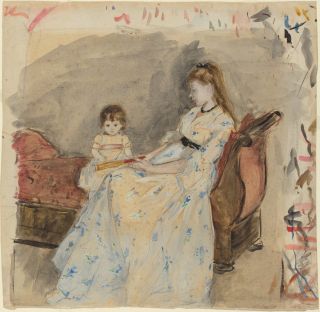Fantasies
The Bourgeois Revolution
Our fantasies and expectations about family life arose two centuries ago
Posted March 23, 2015

The phrase “bourgeois revolution” brings to mind the violent upheavals of the late eighteenth and nineteenth centuries, when France swept away the Old Regime and the last vestiges of feudalism, when many nations, beginning with the United States, cast off colonial rule and attained independence, and when others, above all Italy and Germany, achieved national unification through blood and iron.
All across the western world, accompanying these bourgeois revolutions was the triumph of legal systems supportive of a market economy. Increasingly, an expanding middle class wrested political power from traditional elites.
But the late eighteenth century also witnessed another, equally weighty bourgeois revolution: The ascendance of a particular “middle class” mentalité and way of life that involved genuinely new attitudes toward the self, love and friendship, marriage, childrearing, and work.
At the heart of this new outlook was a rising rejection of an aristocratic set of values, emphasizing honor and deference, and the triumph of a bourgeois outlook far more complex than the word “Victorian” suggests.
There was the projection or displacement of impulses previously associated with religion onto other objects, whether love (which was recast in the religious language of reverence and redemption) or art or music. There was a heightened emphasis on the self and the emotional interior apparent in the spread of confessional diaries and personally revealing letters, including intimate love letters.
Especially noteworthy was the extreme sentimentalizing of the inward turning, emotionally intense nuclear family, accompanied by the spread of new rituals of family life, from the elegant white wedding to elaborate holiday celebrations at Christmastime and later at Thanksgiving.
A new ideal of intensive, self-conscious parenting arose, as did a profound shift in attitudes toward children, who came to be viewed as fragile, vulnerable creatures who needed to be protected from the corrupting influence of the outside world and who were considered as malleable as a ball of wax and whose character could be shaped for good or ill.
Meanwhile, male ambition, which, previously, had been regarded as a vice, a sin, and a threat to social order, but which was transformed into a potential (if doubled-edged) virtue that could be harnessed for positive ends. To cultivate ambition in their sons, parents and educators attached enormous significance, for the very first time, on team sports, which became the primary mechanism for instilling controlled aggression in boys.
At the same time, friendship became privatized: It was now idealized as a relationship free from pragmatic or selfish considerations. Romantic love was spiritualized: It came to be regarded as ethereal and disembodied emotion. Family life was romanticized: And this sentimentalization of family life would obscure the actual struggles over power, individuality, and self-fulfillment that took place within households.
Meanwhile, childrearing became increasing systematic and self-conscious approach, while work, long regarded as a burden underwent a radical revaluation as it became a route to independence and upward mobility.
For all the transformations that have occurred over the past century and a half, we remain the heirs of the bourgeois revolution, which laid the foundation for certain fantasies and expectations that continue to shape attitudes today.


